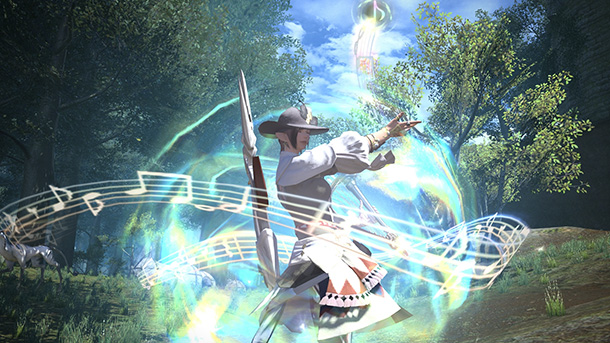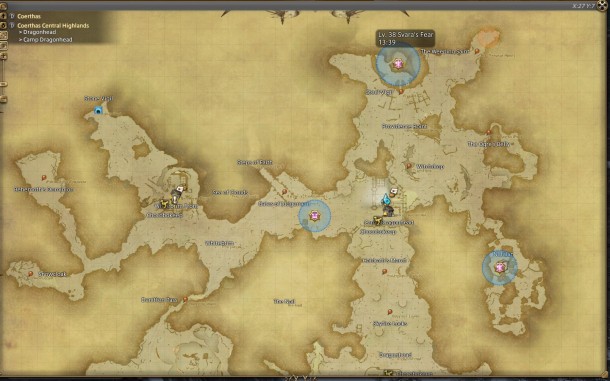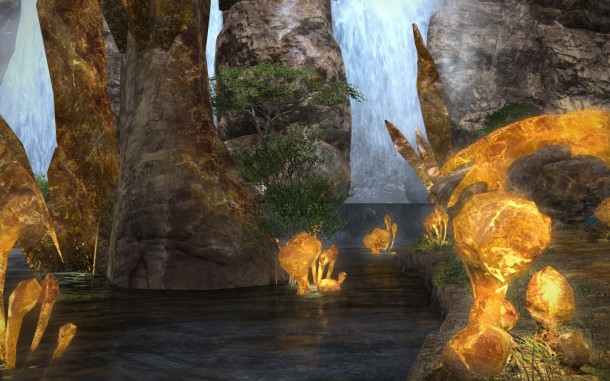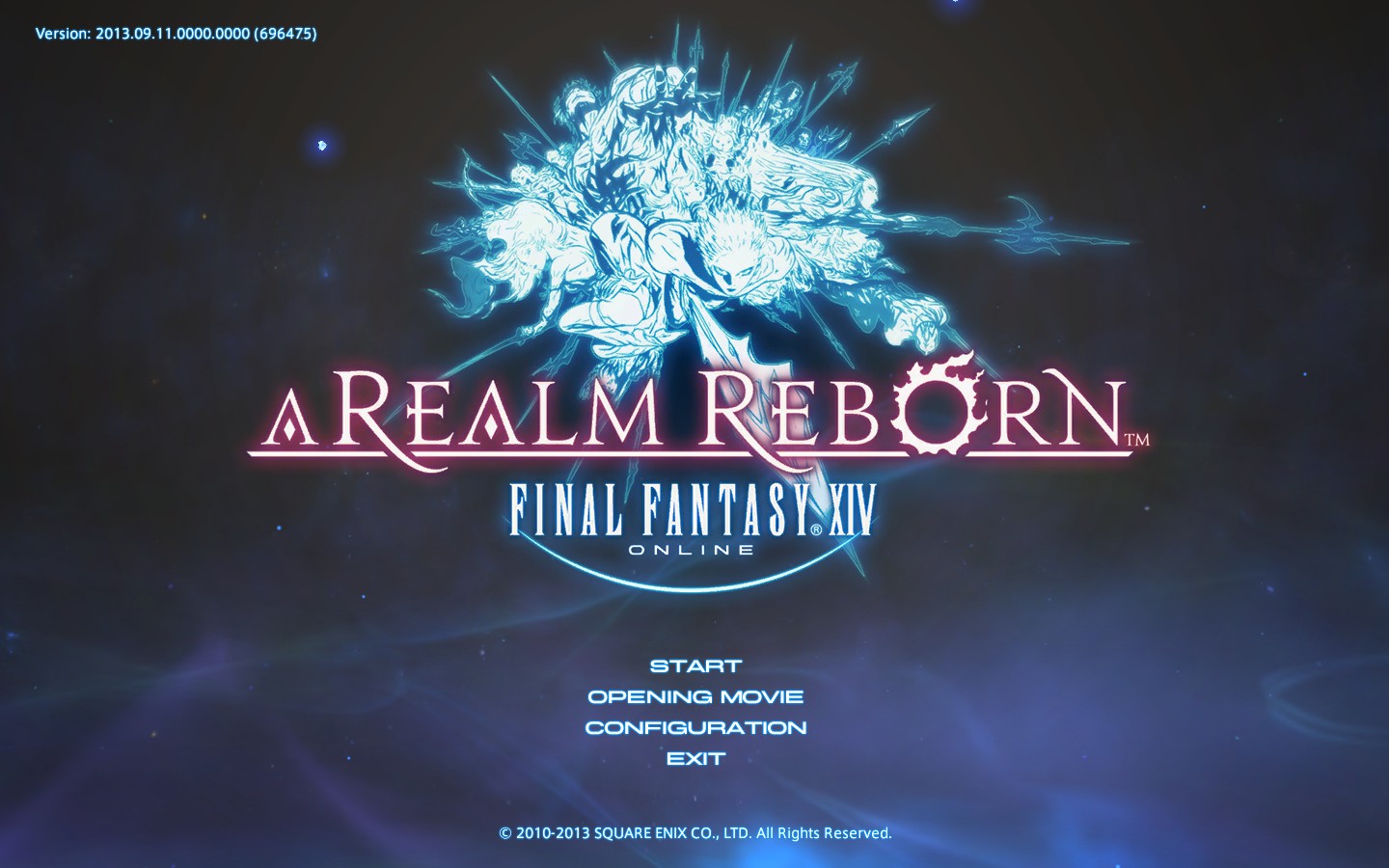I used to love MMOs.
I can remember a time when I would go from one free to play MMO to the next, grinding my way to the top levels, only to get there and move on to the next one. Back then, “free to play” wasn’t as ambiguous a term as it is now. In the MMO space, it was synonymous with poorly translated text, few quests, and a guarantee that you’ll spend days aimlessly killing monsters to get that next experience level — and days per level (DPL!) was not a high caliber timeframe.
My crew and I would seek these out and throw hours upon hours into them. We each had our different reasons for doing so, but we moved from game to game fast enough that there was never a real burnout from any one MMO.
Then I made the mistake of diving into World of Warcraft. Forget, for a minute, how streamlined and engrossing everything in World of Warcraft is now. It was not nearly so streamlined back then. The original World of Warcraft leveling tapered off in the late 40s, and the climb from there to the level-cap of 60 was rough — but not so rough that it could compare to those free to play MMOs I had sunk hundreds of hours into.
In short, World of Warcraft was easy for me, even then. Before I knew it I had sunk hundreds of hours into it, alone, and had gone as far as to begin competing for speed-level records in the game. I never quite broke any, but I came awfully close.
By the time Wrath of the Lich King, the third expansion, had arrived I was entirely burnt out on World of Warcraft, and having taken a break from it after hitting the level cap again, found that it wasn’t just World of Warcraft I had burnt out on, but all MMOs in general. There was a period of time where I couldn’t bring myself to even touch the genre. The thought of jumping into a new MMO, to start fresh, presented a vague sense of nausea.
And then I got Cataclysm. I’m not even sure I hit the level cap in there. I had thought the time between my early departure from Wrath of the Lich King and Cataclysm would have alleviated some of the burnout I had been feeling, but it did not. By the time I had entirely washed my hands of World of Warcraft I had played for literally thousands of hours.
I did not buy Mists of Pandaria.

Final Fantasy XIV: A Realm Reborn, for better or worse, reminds me a lot of vanilla World of Warcraft. Eorzea, the country A Realm Reborn is set in, feels as large and intimidating as Azeroth did in the mid-2000s — complete with overly large cities. The key difference though, is that every zone is separated by a quick loading screen. While it’s possible to travel from one end of the map to the other, you’ll hit a dozen or more loading screens by the end of it. There’s a heavy emphasis on instanced content, from individual zones, to class specific quests or pivotal story quests.
Each individual zone has at least one ‘Aetherite Crystal’, a place in a quest hub that allows near instant teleportation to anywhere, from anywhere. Once you’ve activated one of these crystals, you can teleport from anywhere on any map, with the only barrier being a small fee of money. While there are no boss monsters just roaming on each map to snatch slightly better gear than normal from, there’s also a system in place designed to share exp for kills — instead of getting no experience because someone else hit a monster first, a monster will get tagged by one player, automatically awarding them full credit for the kill, but another player who jumps in and helps will also be rewarded for helping instead of penalized.
There’s no one thing that makes A Realm Reborn a unique MMO. At first blush, the design looks like what you would expect from an old-school MMO. And I think that’s where a lot of the charm comes from; this is the Grand Theft Auto to other MMOs’ Saints Row. World of Warcraft and other MMOs have gone in a different direction, with flying mounts and massive set pieces, superpowers and attempts at action focused combat.
A Realm Reborn is very much what you would expect an MMO to be if you pictured one of those mid-2000s MMOs and imagined each piece designed and refined for a decade.
The first time you take your character through the levels it’s a fairly easy process. There are plenty of quests that, for the most part, have you running through almost the entire world at one point or another. Most of the quests you can take in any batch will have you completing objectives in the same general area, making the process of actually completing all your quests at once as easy as possible, and while the majority of the quests are standard MMO tropes, there are a few here and there that seem like entirely fresh twists.
In addition to simply questing for levels and rewards, they have a handful of other options to choose from if you find yourself getting bored. Levequests are repeatable quests, similar to ‘daily quests’ in World of Warcraft, except you can pick them up and repeat them over and over, until you run out of allowances. These allowances build back up, but slowly, at a rate of 3 every 12 hours. Then it’s back to the questing, or if you’ve cleared out every quest in the game you’re left to grind dungeons, or FATE grind.
FATEs, short for Full Active Time Events, are spontaneous battles that appear all over every map, most often requiring players to kill a whole lot of whatever monster is spawned. Normally completed in a few minutes, these offer a significant amount of exp and the difficulty and rewards scale as you level up and enter higher level zones. While questing with your first class they’re a nice bit of bonus experience to help you reach the end, but once you start working on additional classes they become a way of life.
FATEs offer so much experience, and are so plentiful, and respawn so quickly, that entire hoards of players will group together and simply run around any given map, clearing out FATEs before moving on to the next one. Instead of running dungeons and aimlessly killing monsters over and over, players run FATEs. Visit any zone in the game and you’ll see numerous players offering spots in FATE parties, or even more players requesting invitation to these parties.

It’s a shame that these ‘FATE Trains’ have become the standard for gaining levels, because ARR does everything it possibly can to get players into dungeons.
While playing through the story, there are several points where you will temporarily run out of quests and get driven toward dungeons. These story-centric dungeons need only be visited once each to progress the story, but almost every dungeon offers interesting sights, novel boss fights, and interesting mechanics.
In one dungeon, a miniboss is entirely invincible, forcing the party to maneuver smaller monsters near the boss. These monsters explode, damaging the boss, and making it smaller. After repeating this several times the boss has been blasted apart enough to be damaged normally. In another, ignoring a mostly nondescript decoration at the beginning of the dungeon can cheat you out of an answer required for a puzzle at the end to receive extra rewards.
Almost every dungeon in A Realm Reborn is a worthwhile experience, but even the dungeons don’t hold a candle to the Primal fights.
Primals are sort of the Summons of previous Final Fantasy games, though in A Realm Reborn they take the role of large, powerful, angry deities summoned at the behest of groups of monsters you fight throughout of the game. There are three of these fights required for the story, and are easily the most intense, difficult moments in the entire game., and are all paired with incredible music.
http://youtu.be/zCXyL2ESkvc?t=1m10s
Once you’ve reached the level cap of 50 with any class, you wind up revisiting far more difficult versions of these fights as part of the end game content.
When you revisit these fights is a confusing matter. Once the story is completed, a few quests can be picked up that attempt to thrust you into level 50 dungeons that, for the most part, are far too difficult for a character. There are easier dungeons to be delved for gear upgrades, but the game offers no hint as to which dungeons should be done before which dungeons. At 50, you are able to queue for almost anything, but actually succeeding is another matter entirely.
In most other MMOs, there’s a certain fatigue that can set in once the endgame is reached. After running the same handful of dungeons over and over to try and get the best gear possible, a lot of players will create an entirely new character and level it up to take a break from the endgame grind, or to have another role to play in the endgame content. In A Realm Reborn, any single character is able to have every single class, and switching between them is effortless.
Once a player has gotten their first class to level 10, and completed the class quest for that milestone, they are able to run around and collect every other class in the game, all it takes for a cloth-wearing healer to become an armor-wearing tank is to equip a weapon from the class you’d like to switch to. With every new class learned the character receives additional gear sets, allowing for quick switching between classes without needing to manually equip each piece of armor.
http://youtu.be/RP-BpAEfqfY
The ability to be every single role on a single character adds a new, fresh level of addictiveness to the standard MMO obsession. Now instead of getting a character to the endgame and outfitting them with all the best gear, the urge to do it several times over is ever present.
A Realm Reborn isn’t without issues. Some are standard MMO grievances, such as gold farmers spamming chat channels and breaking the economy, while others have less to do with the game itself and more to do with SquareEnix’s poor website design and account management.
My biggest pet peeve, though, is how stagnant the various zones start to feel after any good amount of time has been spent in them.
Later expansions of World of Warcraft sought to deal with this problem through the use of phasing content. Huge chunks of zones would change and evolve as you played through them, and while it segmented the player base in a small way it did incredible things for making the world actually feel alive. A Realm Reborn uses this sort of thing in one tiny way as part of the story, and while the part it utilizes helps lend appropriate weight to the seriousness of the story segment it’s a part of, it never utilizes this phasing content in any meaningful way on a large scale. The zones, while all visually breathtaking, are static.

Final Fantasy XIV: A Realm Reborn has done two things to me that I didn’t expect an MMO could ever do again. It’s offered enough variety to stave off the MMO fatigue that has plagued me for years, and beyond that has made me truly excited for future content. The sheer intensity of what the game subjects you to is something that, for me, is an entirely unique and welcome experience.
This review is based off a retail copy of the game purchased by the reviewer for the PC. Final Fantasy XIV: A Realm Reborn is also available for the Playstation 3, and requires a monthly subscription to play.


No Comments